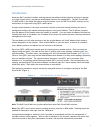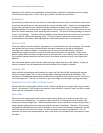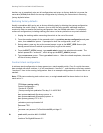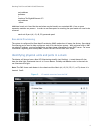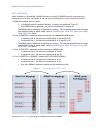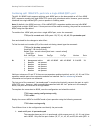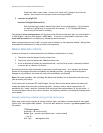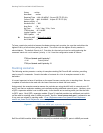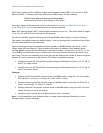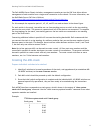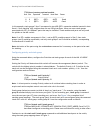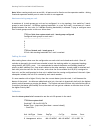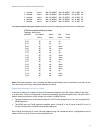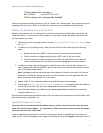
Stacking Dell Force10 MXL 10/40G Switches
10
Status : online
Next Boot : online
Required Type : MXL-10/40GbE - 34-port GE/TE/FG (XL)
Current Type : MXL-10/40GbE - 34-port GE/TE/FG (XL)
Master priority : 0
Hardware Rev : X00
Num Ports : 56
Up Time : 1 wk, 3 day, 23 hr, 5 min
FTOS Version : 8.3.16.0E0
Jumbo Capable : yes
POE Capable : no
Burned In MAC : 00:1e:c9:cc:bb:21
No Of MACs : 3
To force a particular switch to become the Master during stack creation, be sure that switch has the
highest Priority of all switches joining the stack. The switch with the highest Priority number is
elected Master. The default Priority is 0. Priorities for the stack-unit can be configured using the
command 'stack-unit <unit-number> priority <1-14>' from the configuration mode as follows:
FTOS(conf)#stack-unit 0 priority ?
<1-14> Priority Value
FTOS(conf)#stack-unit 0 priority 12
Stacking scenarios
The following section presents a variety of examples stacking Dell Force10 MXL switches, providing
step-by-step CLI commands. Consult the table of contents for a list of examples covered in this
document.
It is most important to have all switches on the same firmware version prior to stacking them. Be sure
to update all switches to be used with the latest firmware to obtain the best results.
Unless noted, the example scenarios assume the switches are using the MXL built-in external ports 33
and 37 and that no expansion modules are installed providing additional external ports. However, once
a QSFP+ expansion module is set to 40Gb mode, it can then be set to stacking mode just like the built-
in QSFP+ ports. Each QSFP+ expansion module (Figure 2) installed provides two additional ports which
can be used for stacking when in 40Gb port mode. Use the “show system stack-port“ command to see
if any ports are already in stacking mode. Error! Reference source not found.Error! Reference
source not found.Error! Reference source not found.
QSFP+ two 40GbE port expansion for the MXL Figure 4.
Dell Force10 MXL modular blade switches may only be stacked using QSFP+ ports in 40GbE port mode.




